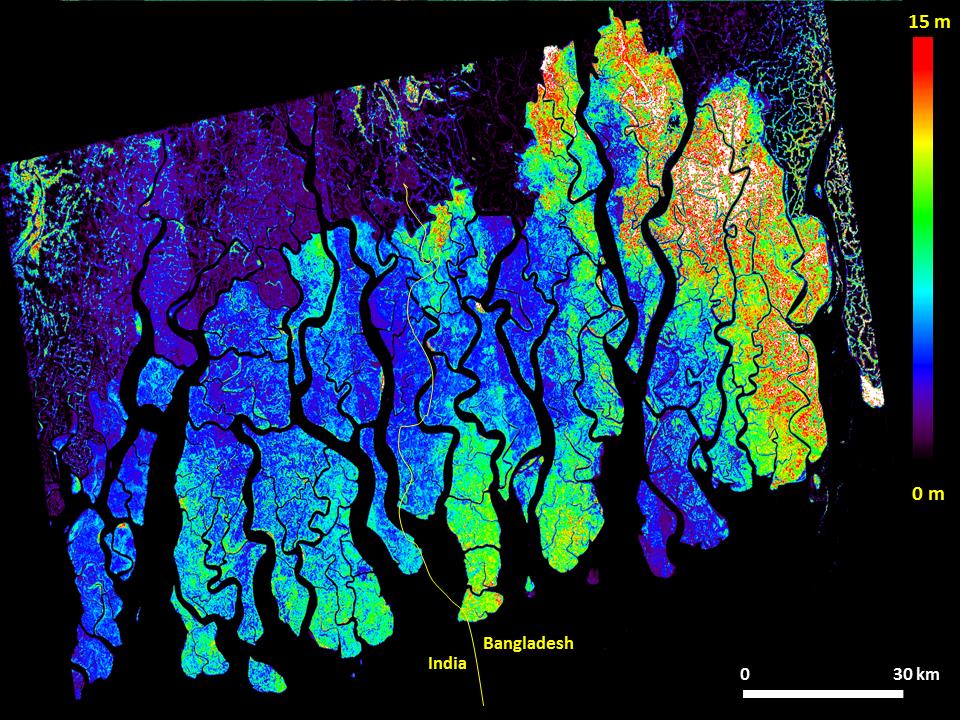Changes in the height of Traustein forest, from satelitte imaging. Via Radar Institute
Following a decade of research, ‘POLinSAR’ sensors can now reveal accurate maps of forests from up in the skies.
Polarimetric InSAR – or POLinSAR – is a remote sensing technique based on combining polarimetric and interferometric information in synthetic aperture radar images.
Advancements in anything from satellites to data gathering has seen this technique grow in significance, with the resulting imagery ground-breaking.
The whole work behind POLinSAR research comes ahead of ESA’s Biomass mission, which will be launched in 2020. Hundreds of researchers met this week for the biennial POLinSAR and first Biomass science workshops hosted at ESA’s centre for Earth observation in Italy.
A pincer attack from Earth to space
In conjunction with dedicated ground research and earth symbol models – software to help predict things like climate and weather patterns – Biomass mission data will be used to advance our understanding of forest ecosystems.
Linked to global warming projects, this combination of approaches may help understand the dynamic of different forests around the planet, “and contribute to international initiatives such as the UN Intergovernmental Panel on Climate Change,” according to the ESA.
It will also help countries, especially developing ones, to evaluate their energy sources.

Height of Bangladesh mangrove, via NASA Goddard Space Flight Centre
One of the recently revealed examples of POLinSAR studies hows how the height of Bangladeshi mangrove forest, which is an important local resource, can be mapped from space. This example uses data from the German TanDEM-X satellite along with POLinSAR.
“Ten years ago polarimetry SAR Interferometry was an exotic technique and only few airborne systems could provide such data,” says Prof. Irene Hajnsek, from the German Aerospace Centre.
“The German TanDEM-X mission has now demonstrated that this novel technique works and we can further look forward to a more sophisticated mode that will be used with ESA’s upcoming Biomass mission.”